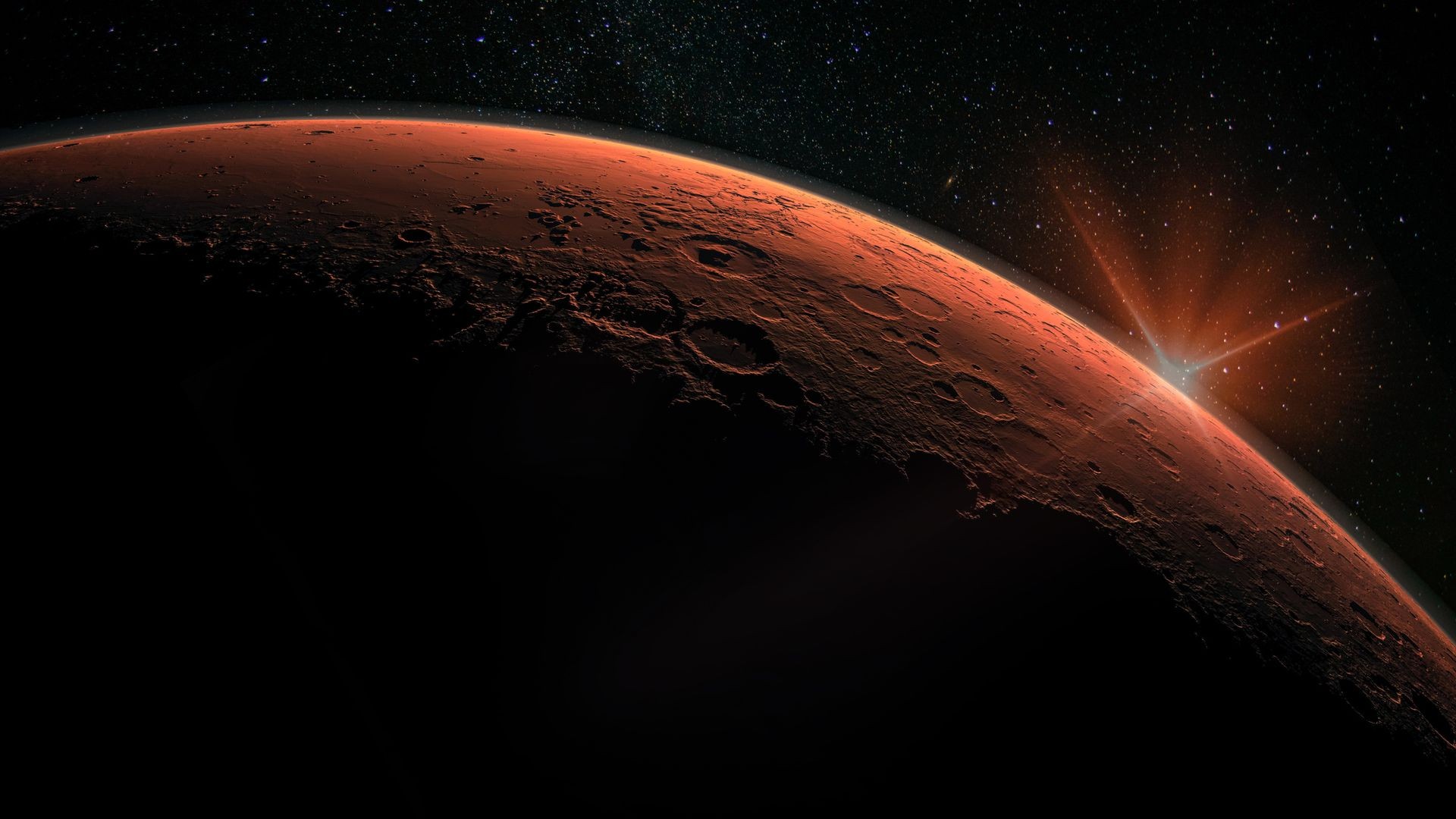Mars has an atmosphere, but it’s significantly different from Earth’s. It’s over 100 times thinner and composed primarily of carbon dioxide, making it unsuitable for humans to breathe. While seemingly barren, Mars’ atmosphere drives a dynamic climate with dust storms and even snow. Let’s explore the key differences between the atmospheres of Mars and Earth.
Mars’ Thin Atmosphere vs. Earth’s Dense Blanket
The most striking difference is the density. Earth’s atmosphere is a thick blanket of gases, primarily nitrogen and oxygen, held close by strong gravity. In contrast, Mars’ weak gravity allows its much thinner atmosphere, dominated by carbon dioxide, to escape into space. This thinness results in a surface pressure about 1% of Earth’s, making liquid water unstable on the surface.
Composition Breakdown: A Tale of Two Atmospheres
Earth’s atmosphere is approximately 78% nitrogen, 21% oxygen, and 1% other gases including argon, carbon dioxide, and water vapor. This oxygen-rich environment is vital for life as we know it.
On Mars, carbon dioxide makes up about 95% of the atmosphere, with nitrogen at 2.7%, argon at 1.6%, and trace amounts of oxygen and other gases. This composition, along with the low pressure, makes the Martian atmosphere toxic to humans.
Climate and Weather: Similarities and Differences
Both planets experience seasons due to their tilted axes. However, Mars’ elliptical orbit causes more extreme seasonal variations and longer seasons compared to Earth.
Mars’ thin atmosphere leads to extreme temperature fluctuations. While the average temperature is a frigid -60°C (-80°F), it can range from a comfortable 20°C (70°F) at the equator to a bone-chilling -125°C (-195°F) at the poles.
Despite its thinness, the Martian atmosphere supports weather phenomena. Dust devils are common, and massive dust storms can engulf the entire planet for months, impacting sunlight and visibility for robotic explorers like the Ingenuity helicopter.
Even snow occurs on Mars, but it’s made of frozen carbon dioxide, not water. These tiny particles create more of a fog than a snowfall.
The Lost Atmosphere of Mars: A History of Escape
Evidence suggests Mars once possessed a much thicker, potentially Earth-like atmosphere billions of years ago. This evidence includes geological features indicating flowing water, such as dried riverbeds and vast canyons.
The leading theory for Mars’ atmospheric loss is the solar wind. Without a global magnetic field like Earth’s to deflect these charged particles, the solar wind gradually stripped away Mars’ atmosphere over millions of years. This process continues today, albeit at a slower rate.
Conclusion: Two Worlds Apart, Yet Connected
Comparing the atmospheres of Earth and Mars highlights the delicate balance of conditions that make a planet habitable. While Earth’s dense atmosphere protects and nurtures life, Mars’ thin atmosphere paints a picture of a cold, dry world. Studying Mars helps us understand atmospheric processes and the factors that contribute to planetary evolution, ultimately providing valuable insights into our own planet’s past, present, and future.
